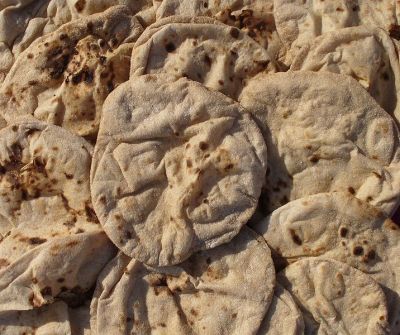Archaeologists Say Newly Discovered Crumbs Are Earliest Evidence of Bread

Archaeologists have found the charred remains of bread crumbs in Jordan's Black Desert that are believed to be the oldest evidence of bread ever discovered.
The crumbs were found in two fireplaces. Through radiocarbon-dating, archaeologists concluded that the fireplaces were used over 14,000 years ago.
"Our finds provide empirical data to demonstrate that the preparation and consumption of bread-like products predated the emergence of agriculture by at least 4,000 years," the study's authors —
Amaia Arranz-Otaegui, Lara Gonzalez Carretero, Monica N. Ramsey, Dorian Q. Fuller, and Tobias Richter — said.
"Bread has been seen as a product of agriculturist, settled societies, but our evidence from Jordan now basically predates the onset of plant cultivation ... by at least 3,000 years," said Richter, from the University of Copenhagen, noting that fully-fledged agriculture in the Levant is believed to have emerged around 8,000 BC, according to The Guardian.
"So bread was being made by hunter-gatherers before they started to cultivate any plants."
Prior to the discovery of the burnt crumbs, the oldest known evidence of bread was unearthed in Turkey. Those remnants of ancient bread were said to be 9,000 years old at the time they were found.
Some of the food remains from Jordan were made of wheat, rye, millets, oat, and barley. Some included noncereal components.
Professor Dorian Fuller of the University College London told the BBC that the bread crumbs found in Jordan double as the "earliest evidence we have for what we could really call a cuisine, in that it's a mixed food product."
The archaeologists believe that the bread would resemble the flatbreads that are widely eaten today.
The process of making the bread was said to have involved grinding up cereals and club-rush tubers first so that the bakers would have flour to use. They would have then taken the flour and mixed it together with water to create the dough, and the final stage of the bread-making process would have involved cooking the bread in hot ashes or on a flat stone placed inside the oven.
The ancient bread also could have tasted a bit nutty because of its multigrain composition, while the usage of the club-rush tubers would have imparted a slight, salty flavor, said Richter.
The archaeologists believe that the bread baked in the Jordan ovens was consumed during feasts or special rituals and they may have been eaten alongside different types of meat as well.




























